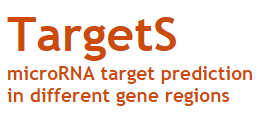Status:
Platform:
Implement Technique:
Species:
Currently available microRNA (miRNA) target prediction algorithms require the presence of a conserved seed match to the 5' end of the miRNA and limit the target sites to the 3' untranslated regions of mRNAs. However, it has been noted that these requirements may be too stringent, leading to a substantial number of missing targets.
We have developed TargetS, a novel computational approach for predicting miRNA targets with the target sites located along entire gene sequences, which permits finding additional targets that are not located in the 3' un-translated regions. Our model is based on both canonical seed matching and non-canonical seed pairing, which discovers targets that allow one bit GU wobble. It does not rely on evolutionary conservation, so it allows the detection of species-specific miRNA-mRNA interactions and makes it suitable for analyzing un-conserved gene sequences. To test the performance of our approach, we have imported the widely used benchmark dataset revealing fold-changes in protein production corresponding to each of the five selected microRNAs. Compared to well-known miRNA target prediction tools, including TargetScanS, PicTar and MicroT_CDS, our method yields the highest sensitivity, while achieving a comparable level of accuracy. Human miRNA target predictions using our computational approach are available online at http://liubioinfolab.org/targetS/mirna.html
A simple but powerful computational miRNA target prediction method is developed that is solely based on canonical and non-canonical seed matches without requiring evolutionary conservation of the target sites. Our method also expands the target search space to different gene regions, rather than limiting to 3'UTR only. This improves the sensitivity of miRNA target identification, while achieving a comparable accuracy with existing methods.[1]









